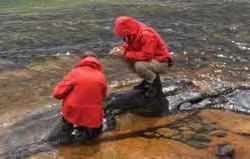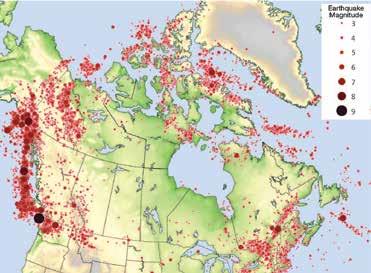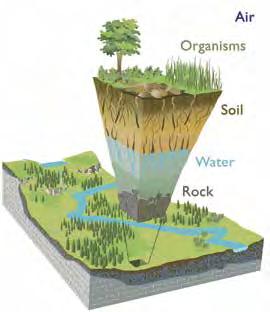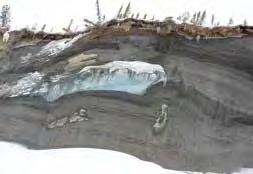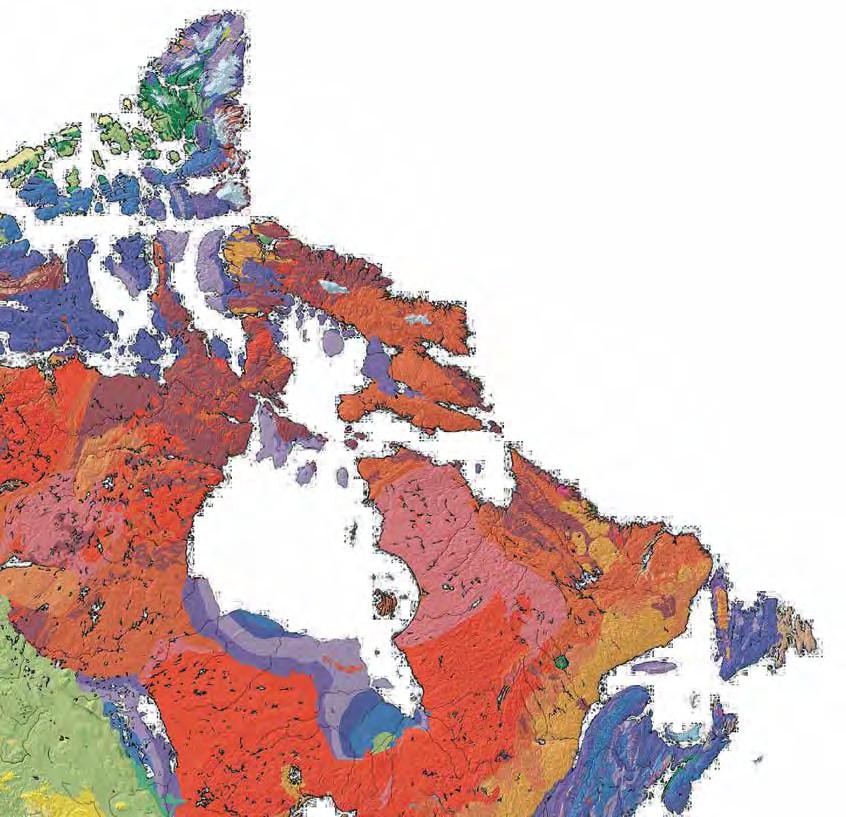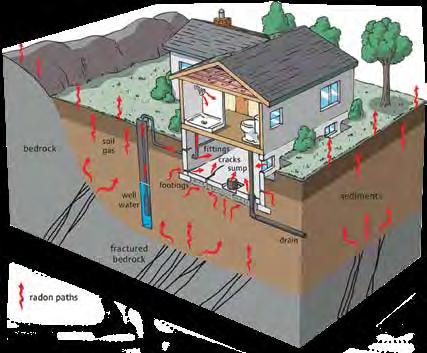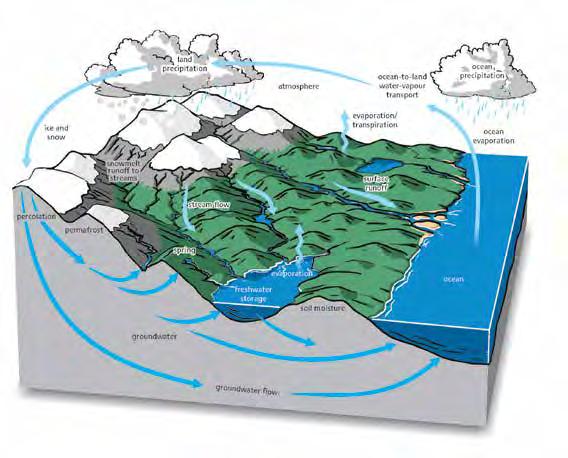GEOSCIENCE AT THE CUTTING EDGE OF INNOVATION Geoscientists need more than boots and a hammer to provide the knowledge needed to discover, extract, manage, and protect Canada’s resources and to provide decisionmakers with the tools to make informed decisions about land use and protection from natural hazards. Using sophisticated techniques and tools, geoscientists collect gigabytes of information about the Earth to generate high-level science that helps plan for the wise use of finite resources and the social and environmental well-being of society. DATA A single rock sample can provide a trove of information, such as its location, density, and mineral and chemical composition, and its ability to conduct electricity, transmit a seismic wave, or to contain water or permit its flow. Geoscientists collect data at every scale, from the composition of tiny bubbles of fluid trapped inside a single mineral crystal or pollen grain that fell to the sea floor during the age of the dinosaurs, to the dimensions of mountain ranges and continental margins. They are specialists at data collection, management, and interpretation. Historical paper archives of reports and geological maps are becoming increasingly rare. Old maps, photographs, and reports are digitised and archived on modern digital media for safekeeping and easy access by modern day geoscientists. THE GEOSCIENTISTS’ TOOLKIT Today, geoscientists are highly skilled professionals with an extensive knowledge of rocks, strong logistical and operational skills, and the ability to work in multi-disciplinary teams. They are also able to work with the latest in modern technology and information. For example, recent breakthroughs in analytical technology allow geoscientists to quickly and accurately measure the chemical composition and mineralogy of rocks in the field, observe the chemistry within single mineral crystals, or date long-term physical changes in the Earth using isotopes produced by cosmic rays. Global Positioning Systems allow geoscientists to know precisely where they are located at all times, vastly improving their ability to record and map their observations, and Virtual Reality technologies provide exciting new ways to visualise the Earth in three dimensions (3D). Society’s needs for geoscientific information are increasingly
24
sophisticated, and the scientists who provide answers are meeting the challenge. Geoscientists are on the cutting edge of innovation when it comes to finding new ways to use many of these developing technologies.
H. Falck
CYCLICITY, FLEXIBILITY, AND NEW DEMANDS The mining and energy industries tend to be cyclic, reflecting the economic expansion and contraction of different commodity markets over time. Notwithstanding this cyclicity, the work of geoscientists in industry continues to meet evolving needs, supporting the economy with innovative search techniques, new discoveries, and productivity improvements. Geoscientists’ basic understanding of earth processes is key to their ability to meet these challenges.
Precision Geophysics
GEOSCIENCE AND CANADA UNDERSTANDING OUR EARTH: THE VITAL ROLE OF CANADA’S GEOSCIENTISTS


